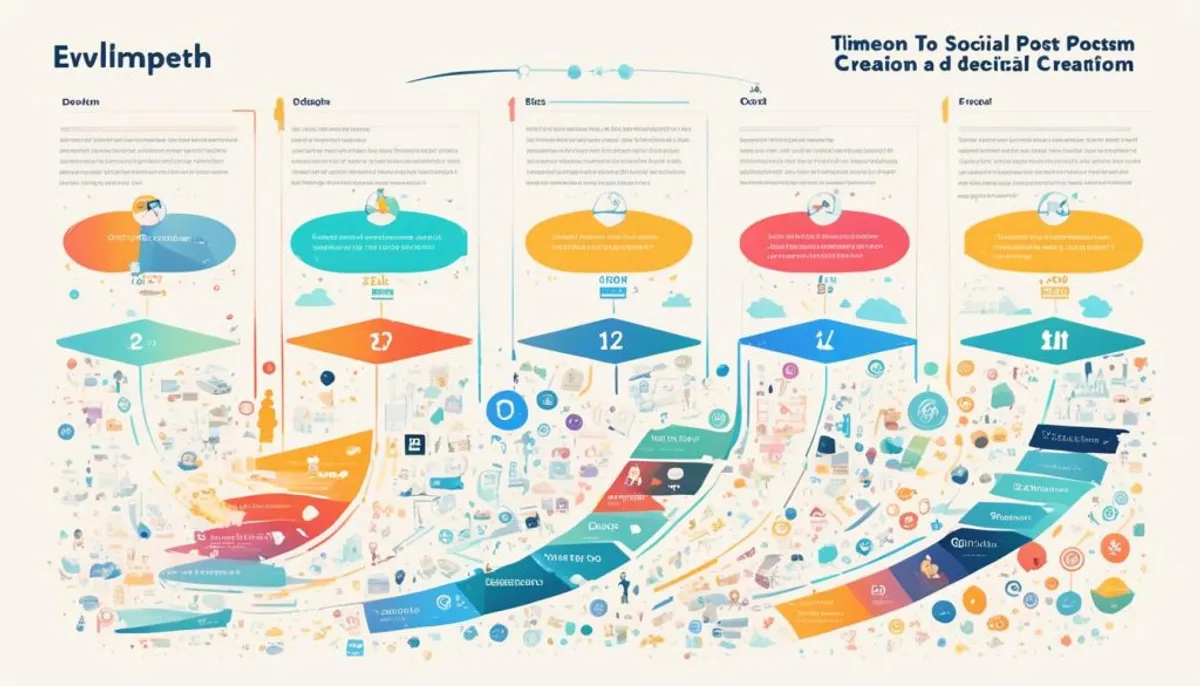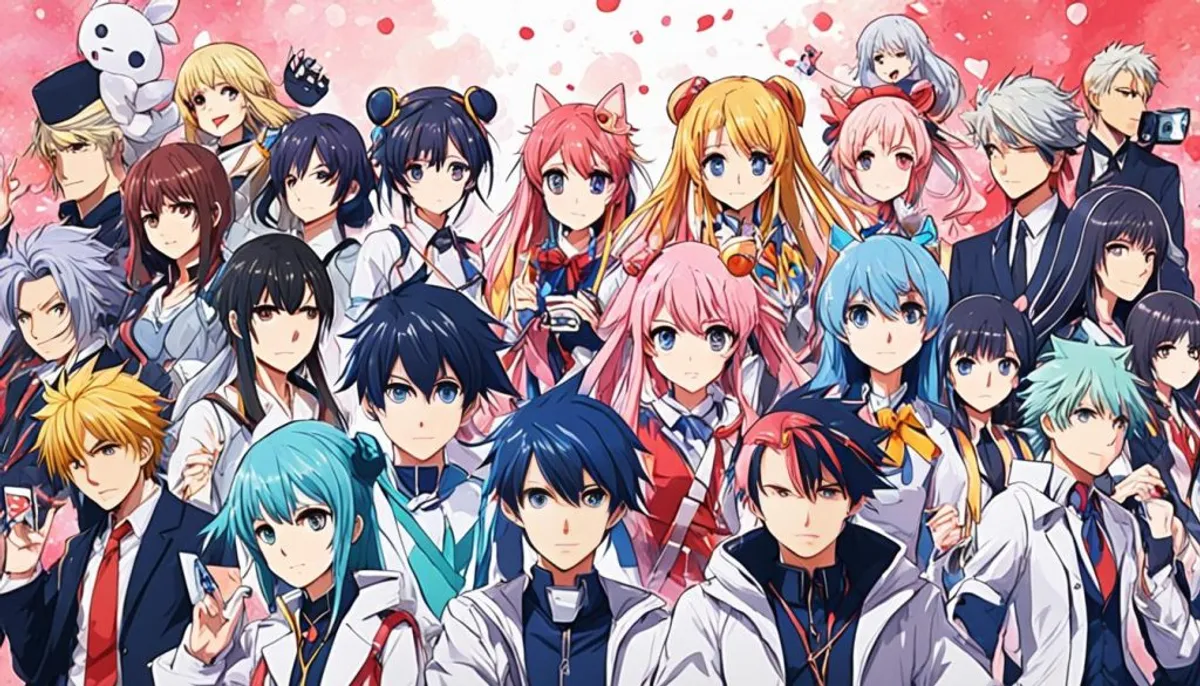The life of a social media post is all about reactions and results it gets over time. New content on social media keeps coming, so posts need to stand out. Posts last different times on each platform. For example, a Facebook post lives for about 5 hours. Instagram and LinkedIn posts stick around for 21 to 24 hours. But, a tweet might disappear in just 18 minutes. The COVID-19 pandemic sped up the flow of content, which makes it harder for brands to get noticed.
Key Takeaways
- The lifespan of social media posts varies across different platforms, with Facebook posts lasting around 5 hours, Instagram and LinkedIn posts lasting 21-24 hours, and tweets drowning in 18 minutes.
- The COVID-19 pandemic has accelerated the constant flow of new content on social media, making it even more challenging for brands to capture their audience’s attention.
- Understanding the lifespan of social media posts is crucial for brands to effectively manage and extend the reach of their content.
- Leveraging employee engagement and social media groups can help amplify the organic reach of content, while paid marketing can also be used to boost post performance.
- The social media landscape continues to evolve, with platforms adapting to changing user preferences and the need for monetization, while users seek more authentic and specialized online experiences.
Understanding the Lifespan of Social Media Posts
How long a social media post lives is key to how well it does. A Facebook post lasts about 5 hours. Instagram and LinkedIn posts stick around for about 21 and 24 hours. However, on Twitter, a new tweet can get lost in just 18 minutes. Since COVID-19, more content is online, making it hard for brands to grab attention.
Life Span of a Post
Think of keeping a social media post active like watching a sick person’s oxygen. With COVID-19, doctors want levels to be between 94-100. For your post, you look at reach, likes, and sales. Instead of rushing to pay for ads, there are better tricks. Things like getting workers to share your post or joining relevant online groups can keep it going longer. Additionally, utilizing budget-friendly social media tools can enhance your reach without breaking the bank.
It’s All About Engagement
Ads aren’t always the best to keep a post alive. Getting your team to join in and talking in online groups helps more. This way, your message spreads further. Also, you can bond better with your fans in those online places. So, instead of just ads, think about these other ways to get your post seen and loved more.

Strategies for Extending the Reach of Social Media Content
It’s key to get employees involved in spreading the word on social media. When they share company messages, it reaches 561% further than if the company does it alone. This is because they often have more friends online than many small businesses. By getting these folks to help, companies can get more social media attention.
Leveraging Social Media Groups
Joining social media groups can also help a lot. These groups are all over social media, focused on different topics. When people in these groups like and comment on your posts, more people get to see them. This helps your posts show up on more timelines, reaching a bigger audience. Additionally, having a myspace profile can enhance your visibility, as it connects you with a broader network of users who may engage with your content.
Enhance the Engagement with Paid Marketing
If the free ways to boost posts aren’t working well enough, try paid ads. Investing in ads can really get more eyes on your content. Spend money on your best posts to get people who don’t follow you, to start following. Remember, people online only spend about 8 seconds looking at something. So, make sure your content is so good it stops them from scrolling.
| Social Media Platform | Average Post Lifespan |
|---|---|
| 5 hours | |
| 21 hours | |
| 24 hours | |
| 18 minutes |

how long social media last: The Evolution of Social Networking
Social media has changed a lot. It started by helping people connect. Now, it’s full of brands, influencers, and paid posts. Facebook, Instagram, TikTok, Twitter, and others are focused on selling. You see more ads than updates from friends.
From Connection to Commercialization
Many users today look for smaller, more personal online spots. These places care more about real connections than making money. They’re for people with shared hobbies, interests, or causes. This makes the online experience feel authentic and welcoming.
The Rise of Niche Communities
Social media is moving to more specific sites. These focus on certain hobbies or interests, reflecting changing consumer behavior in digital age. They give users a more real and engaging place online. People prefer these to the big and commercial sites. They want to find others who share their true passions.
Conclusion
The social media world is always changing. Sites change to fit what users want and to make money. But, the real need for people to connect stays the same. People want more real and special online places.
It’s key for companies to know social media’s lifespan. This helps them make strong bonds online. They must stay alert as the world of online platforms keeps changing. This will keep them on top and help them grow.
Social media may see many new apps come and go. But, the need for real connections will last, highlighting the importance of in-person communication. Companies can do well by keeping up with trends and being smart.
FAQ
What is the typical lifespan of a social media post?
On Facebook, a post lives about 5 hours. But on Instagram, it can go 21 hours. LinkedIn posts stay around 24 hours. Tweets fade away in 18 minutes.
How has the COVID-19 pandemic affected the lifespan of social media posts?
Since COVID-19, getting noticed on social media has gotten tougher. More posts are made, so content lives shorter.
What strategies can be used to extend the reach of social media content?
Encourage employees to share your messages. Use social media groups. Also, pay to promote your best content.
How has the evolution of social media platforms affected the user experience?
Social media used to be about connecting people. Now, it’s full of brands and paid posts. Some users want more personal, niche communities.
What is the future of social media?
We might see a mix of big platforms and smaller, specialized ones. People want real, personal online spaces. This shift will challenge brands to connect with their audiences in more meaningful ways, highlighting the importance of understanding digital divide.
RelatedRelated articles



